Interior and decorative solutions cannot be imagined without the use of textiles. Popular and most recent trends in decorating suggest its very wide use. It is used, for example, to decorate walls, ceilings, windows and doors. Textile drapery helps to create a unique image for each house, apartment, room. This material will tell you what fabric drapery is and how it can be used.
What is this?
Simply put, drapery is the process of giving fabric and other textiles a three-dimensional shape when they are assembled. If you dig deeper, you will find that there are many types of design. Here are some of them:
- Pulling it together with a cord or ribbon is the simplest option;
- Draping on ribbons and laces with fastening to holders or grabs at certain points;
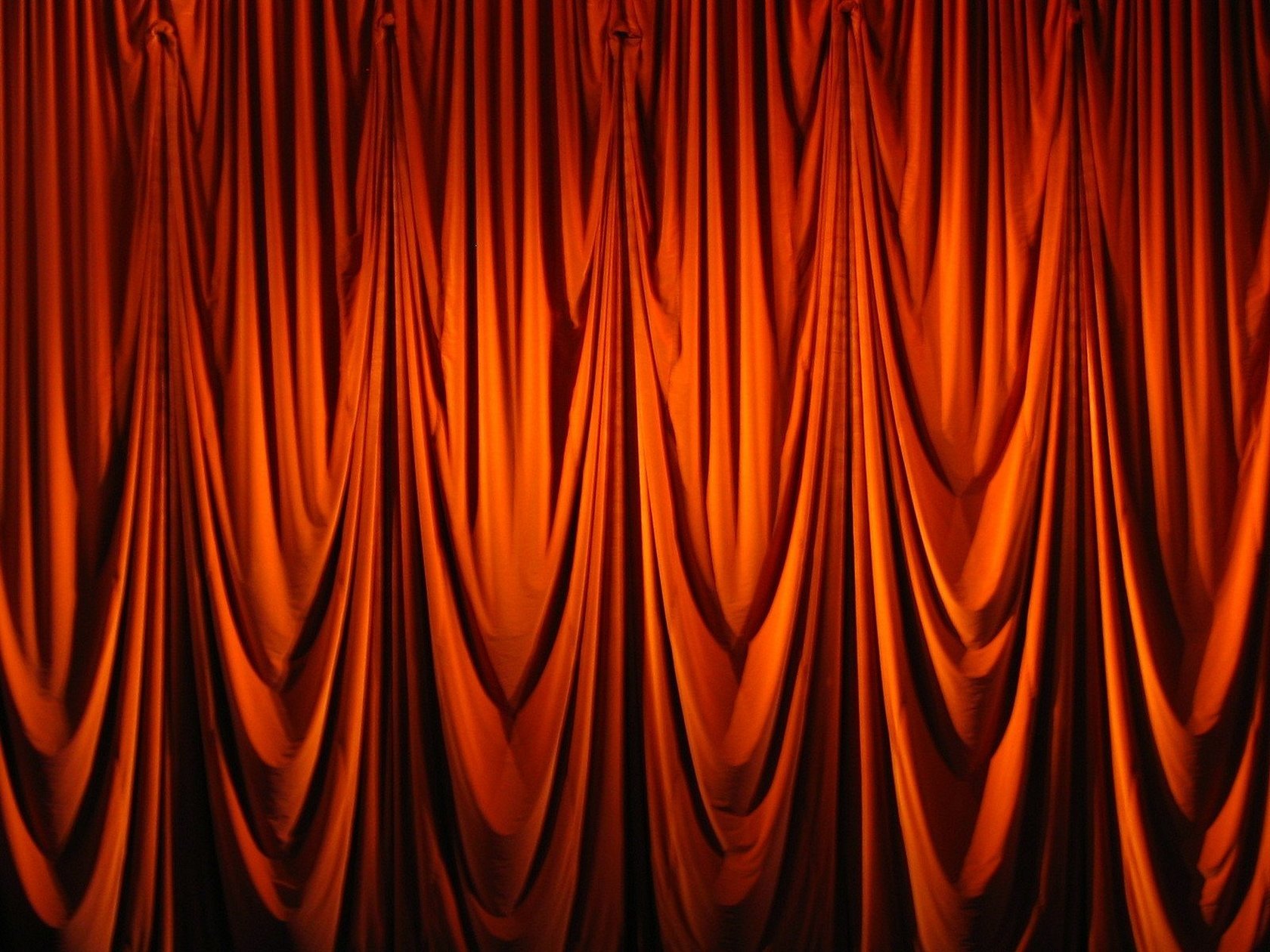
- Creation of unique even folds, which can be one-sided, multi-sided, bow-shaped, etc.;
- In a horizontal position using suspension mechanisms;
- Creating drapery patterns using a pattern.
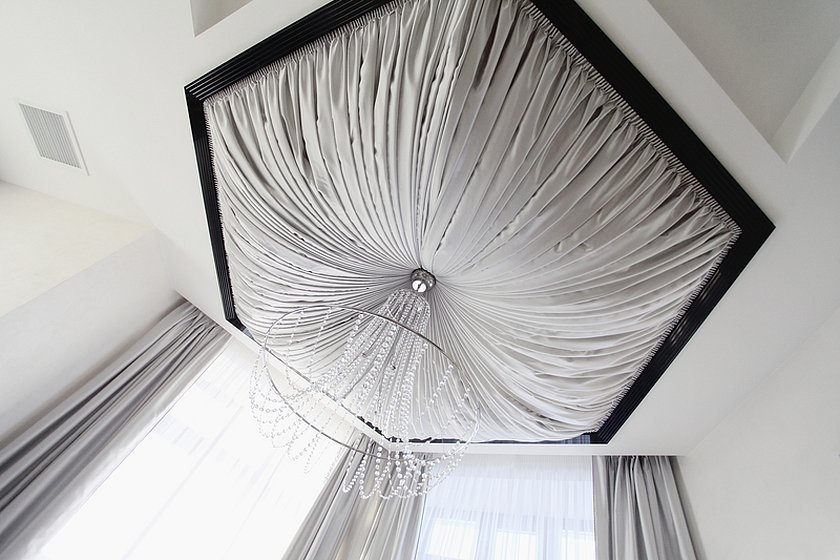
Important! The last method of cutting may differ and depends on the type of fabric, the final form of the decorative element, and the density of the assembly. Rough textiles should be assembled less frequently. Less dense ones – less roughly and often. In any case, before installation, you need to make sketches of future solutions.
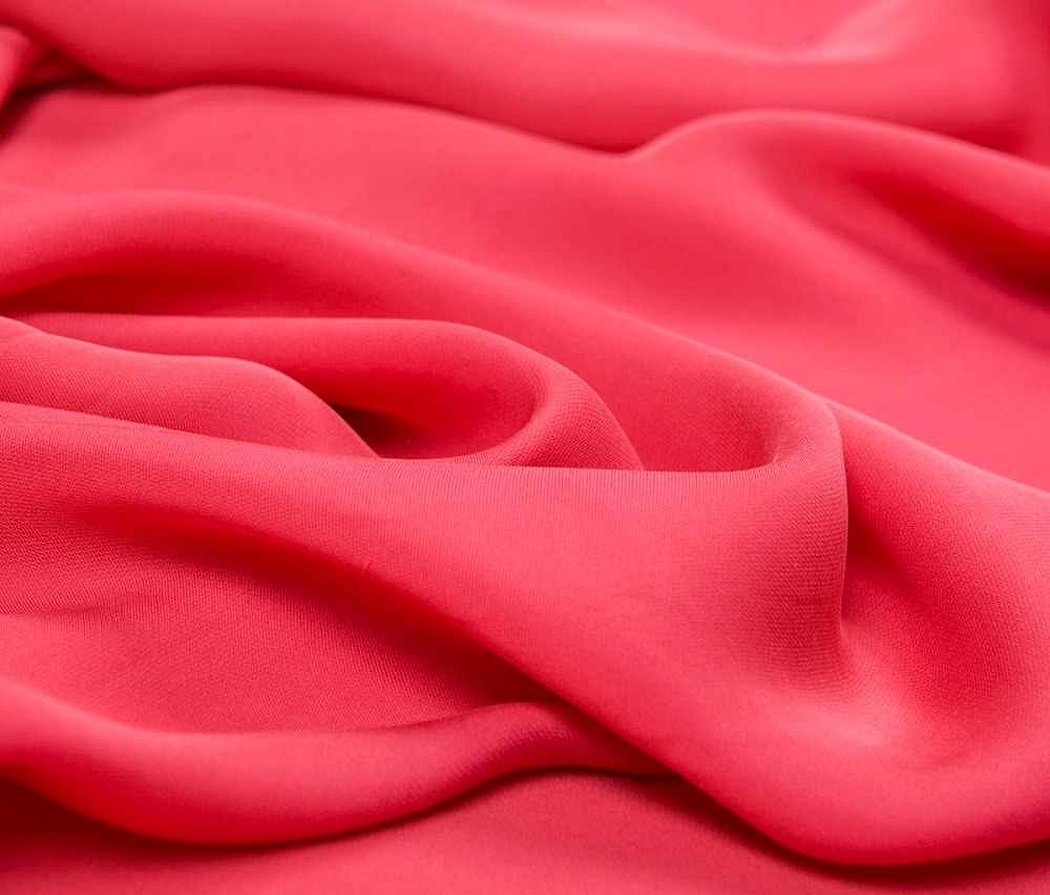
The pattern depends on many parameters, including: calculating the pattern values, adding undercuts, using ribbons and cords, suspenders. It should be understood that the pattern of curtain fabrics and their details, including cascades, swags and ties, is more complex than sewing a simple curtain.
It is also important to understand that you cannot create an effective drapery from any fabric. Some fabrics will not allow you to lay it out quickly and easily. For example, it is advisable not to drape knitted fabrics, as they can stretch out a lot, and the finished product will change shape. Rough and heavy materials are difficult to drape.

Despite all this, the choice of materials that will drape well is large. They should be chosen based on the purpose of the product. For example, light and airy textiles are used for curtains, and heavier ones for drapes. Fabric that can be easily gathered into gathers without special means is ideal for draping. Such fabric should not be too heavy or stretchy, hard or soft.
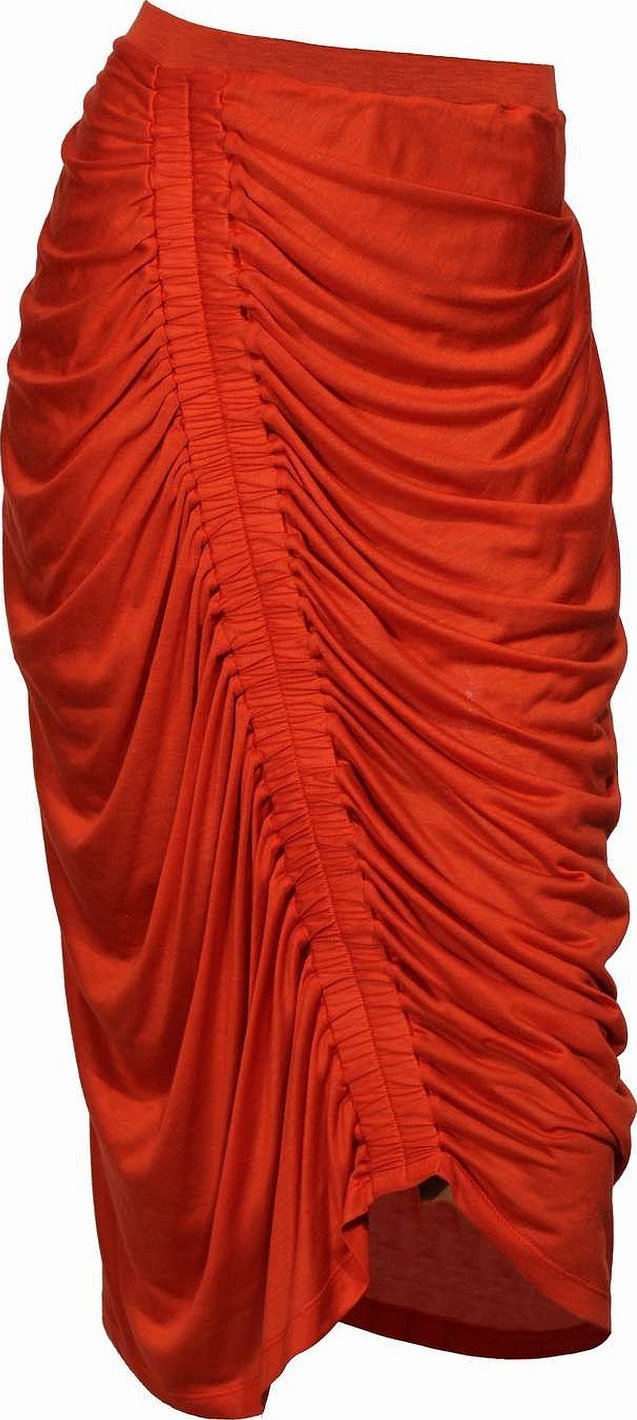
Important! When choosing a material for drapery, you need to consider not only its properties, but also the overall design of the room. The finished elements should look good and harmonious against the general background, emphasizing it.

Drapery in clothing
Drapery in clothing is an element of its decoration and modeling, which can emphasize the ideal figure or carefully hide its flaws, transform it. There is not a single fashion designer who would not resort to using this technique in his collections.
How to beautifully drape fabric for clothing
As for clothing, pleasant and light drapery is achieved by using thin fabrics such as cambric, chiffon, muslin, heavy drapery is achieved by using silk, jersey and viscose, and voluminous drapery is achieved by using textured fabrics that hold their shape.

Important! This element of clothing design has long migrated from dresses and skirts to overalls and pullovers. Even tops are now draped using the latest fabric manufacturing technologies.
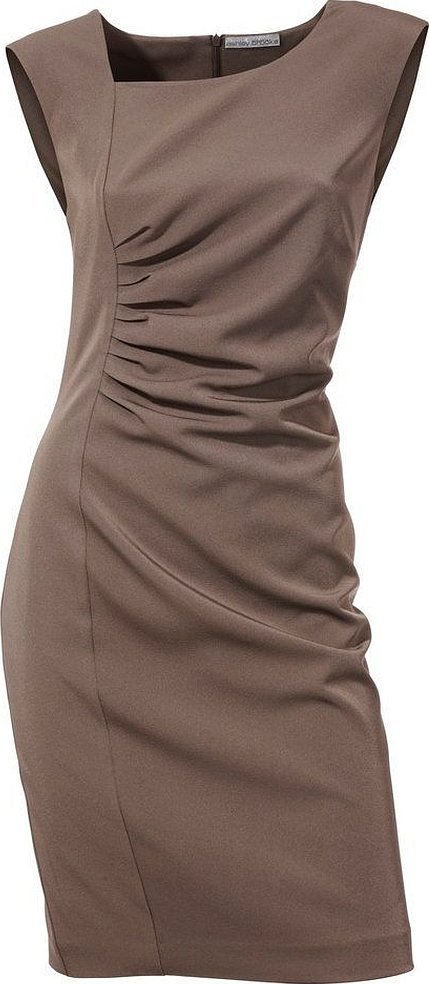
Curtain draping
Window decoration is one of the key places in creating the interior of the house. At the same time, no windows can do without curtains. To create the perfect design element in the form of curtains, you need to understand what types of drapery exist. There are:
- Classic, neoclassical, baroque. Styles of luxury and high cost. Curtains are made of expensive textiles such as velvet, moire, silk, etc. The canvases are decorated with fringe, lace, cords, grabs and holders;
- Art Nouveau style. Based on the simplest draperies and curtains in light colors;
- Art Deco style. Good and expensive fabrics with large patterns and good edging. Characterized by the contrast of bright and dark colors;
- Provence, country. These styles are characterized by maximum simplicity and the use of natural fabrics such as silk, linen or cotton. Curtains are presented with simple folds and grabs.
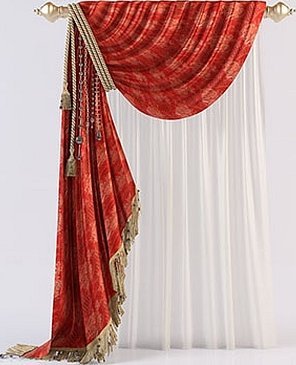
Wall drapery
This type of wall decoration is rare and usually temporary. When using this type of decor, a number of advantages open up:
- Possibility of installation without construction experience;
- No need to treat walls before installation;
- Effective concealment of wall defects;
- Soundproofing;
- No damage to walls during installation.
Important! Modern wall solutions are made from material that is resistant to fading, dust and moisture.
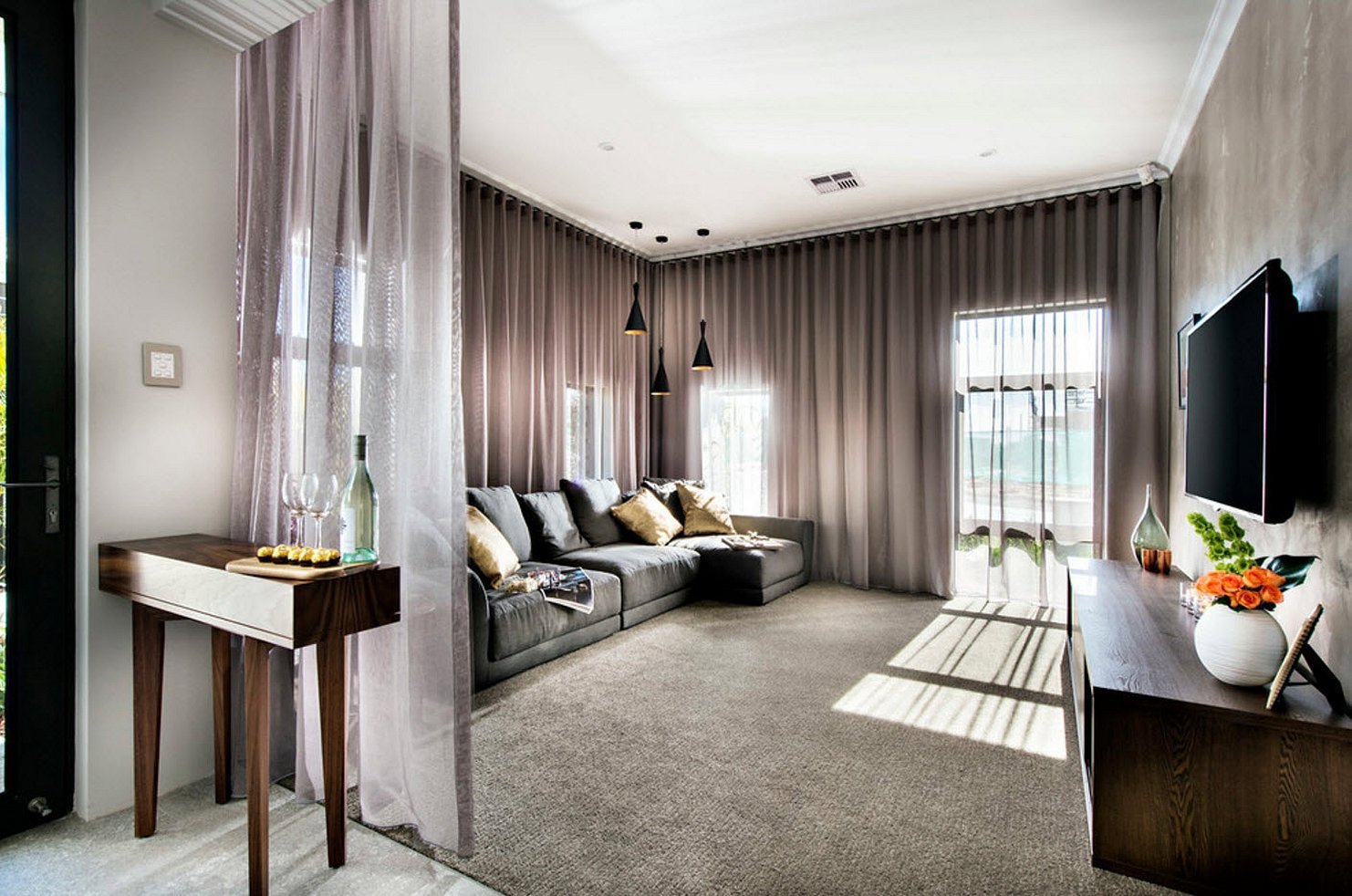
There are also disadvantages of some fabrics when used in this way. For example, pile fabrics, despite impregnation, accumulate a large amount of dust, and in a bathroom or other damp room, even moisture-resistant fabric will sooner or later become damp.
General recommendations for decor are as follows: do not use fabric on the walls in children's rooms or in hallways. This solution is also not suitable for poorly ventilated rooms. Fabric is usually attached to wooden or metal bases for easy removal and washing.
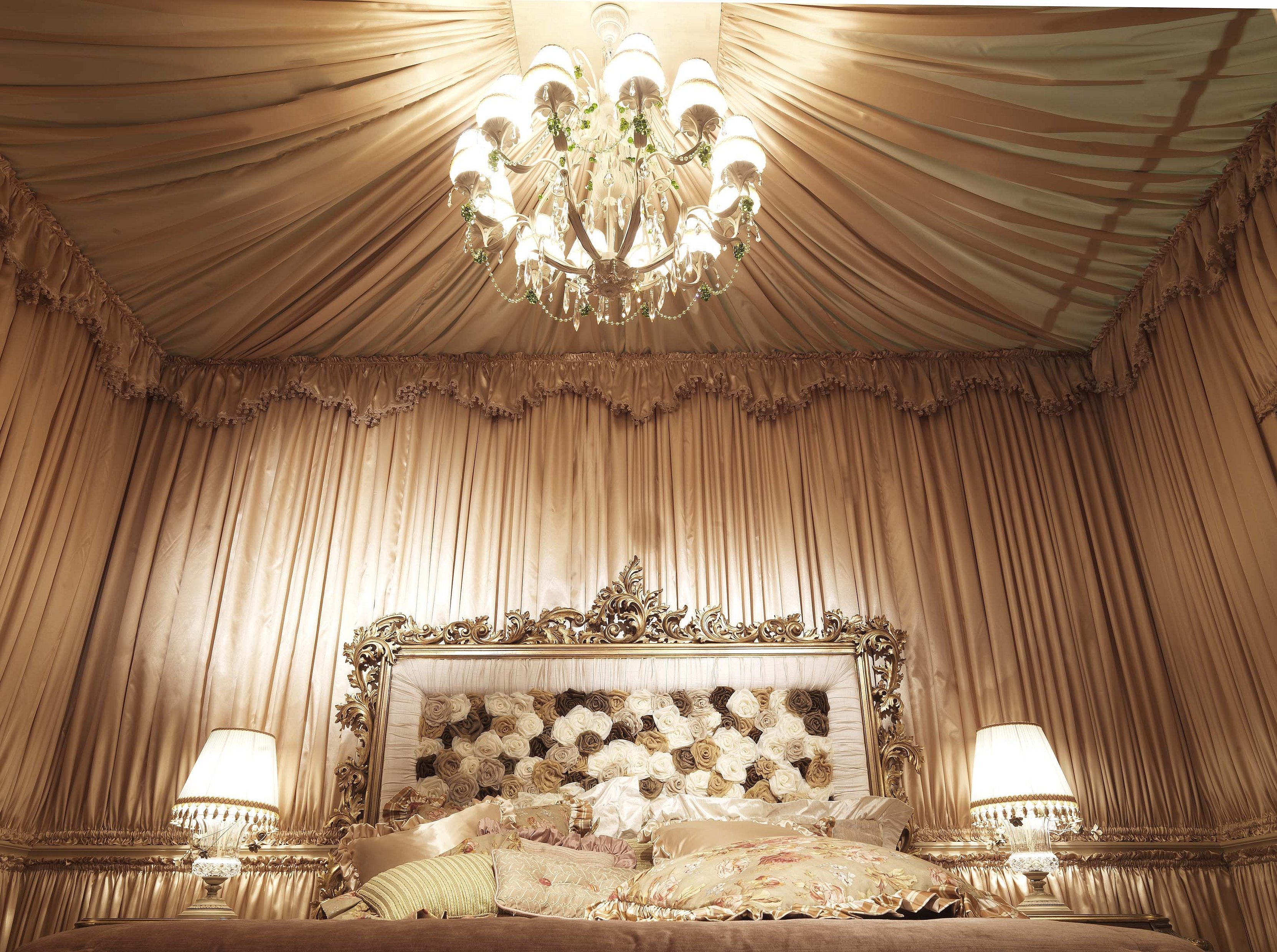
Ceiling drapery
One of the oldest types of decoration, which was used in ancient times as a work of art. The fabric can be placed on the ceiling in the form of a plane of straight lines, a cone of rectangles, covering the entire surface or parts of it.
Drape the ceiling with textiles has the same advantages as drape the walls, but the disadvantages of this approach are much more serious:
- The height of the draped ceiling is noticeably reduced;
- This type of decor is difficult to fit into the overall interior;
- The risk of fire increases as the fabric is highly flammable;
- It is more difficult to wash and clean such a canvas than one hanging on the wall.
This type of ceiling is inappropriate in kitchens, bathrooms and children's rooms.
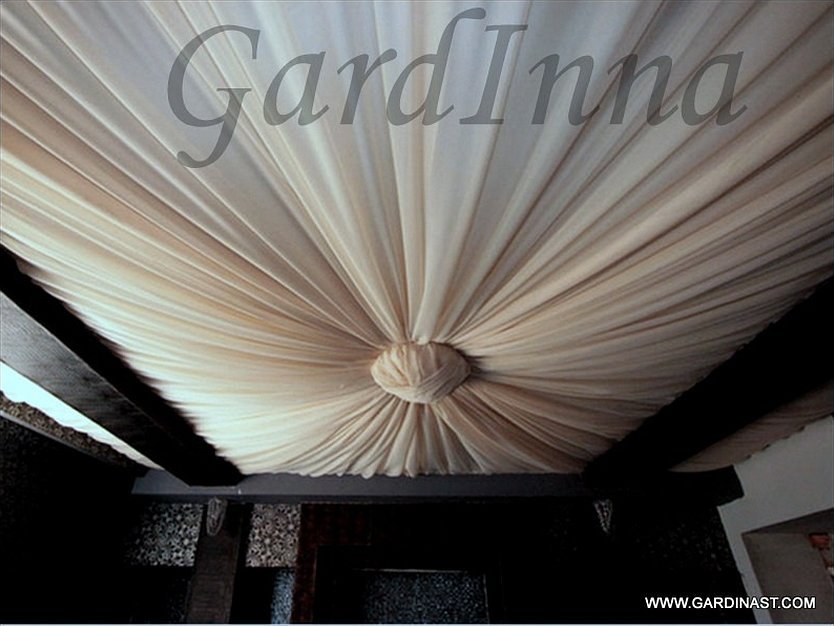
Door drapery
Textiles of such shapes are used both instead of doors as curtains on the doorway, and inside the doors themselves, most often glass. In the first case, the type of fabric, its color and shape should exactly repeat the type of fabric on the windows. Door inserts are used not only in interior doors, but also for decorating cabinet doors.
In many cases, using draped textiles in doorways instead of solid doors is more advantageous and pleasing to the eye.
Important! This solution should be used where there is no need to isolate the room. For example, between the living room and the hallway, the bedroom and the study, etc.
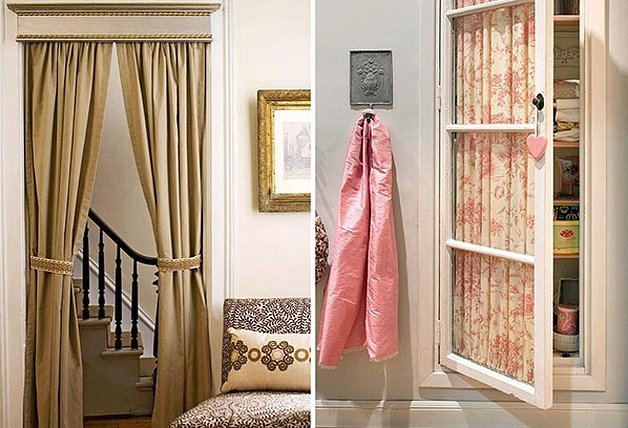
Drapery of arches
These are the same openings, but in the form of arches. Doors are most often not installed on them because of their shape. Therefore, you can decorate the openings with draped fabric. Depending on the type of arch (interior, window, door), the style of drapery is chosen.
For arches in window openings, the drapery solutions are as follows:
- Throw it over the arch on the cornice if the room is not very high;
- Attach it under the bend of the arch on a regular cornice to emphasize its beauty;
- In the form of a bend using a flexible cornice;
- On the fastenings along the bend for added lightness.
For arched window openings, you can use roller blinds, curtains with grabs for light muslin.
Decorating an arched interior doorway follows the same rules as drapery for regular doors: its style should repeat the style of window drapery.
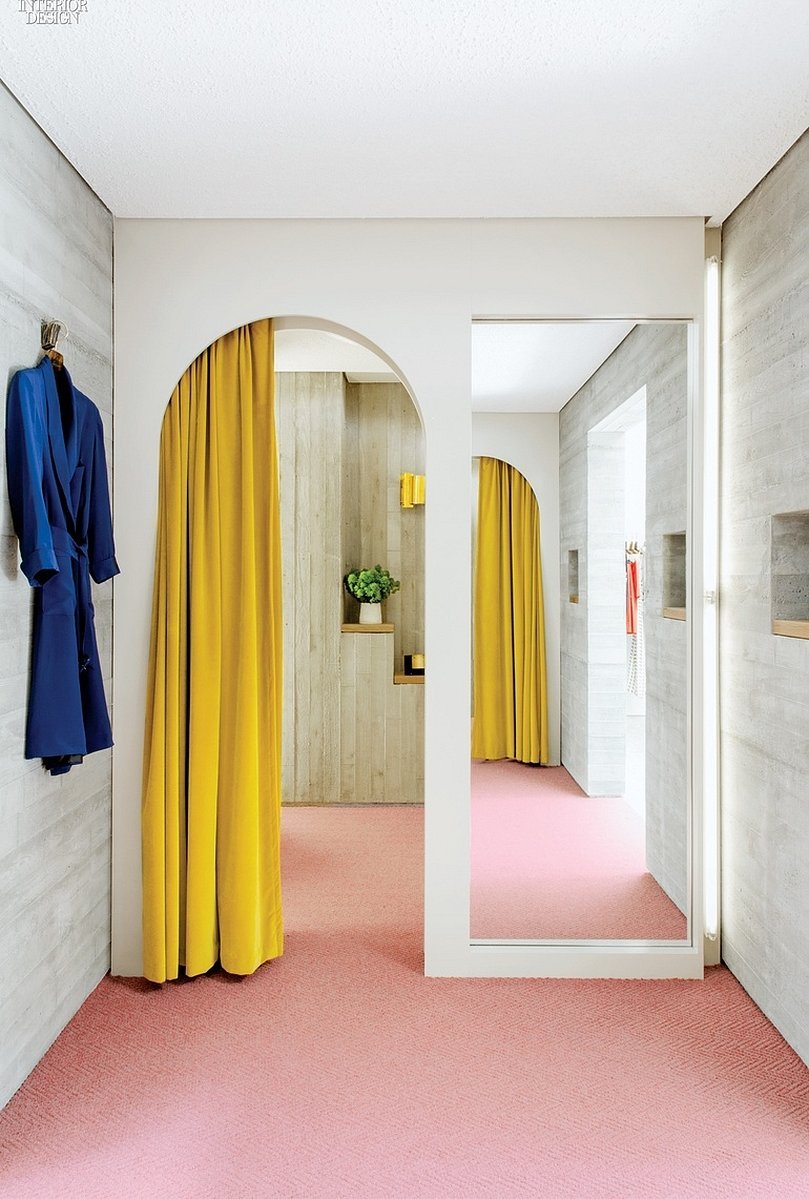
Tent drapery
If the ceilings in the room are very high, you can create a decor in the form of a draped tent. In this case, you need to use additional decorative elements to emphasize the ceiling.
Another option would be to create a tent in the bedroom near or above the bed. The essence of the installation will remain the same: it is necessary to determine the height of the ceiling and the general style of the room's interior.
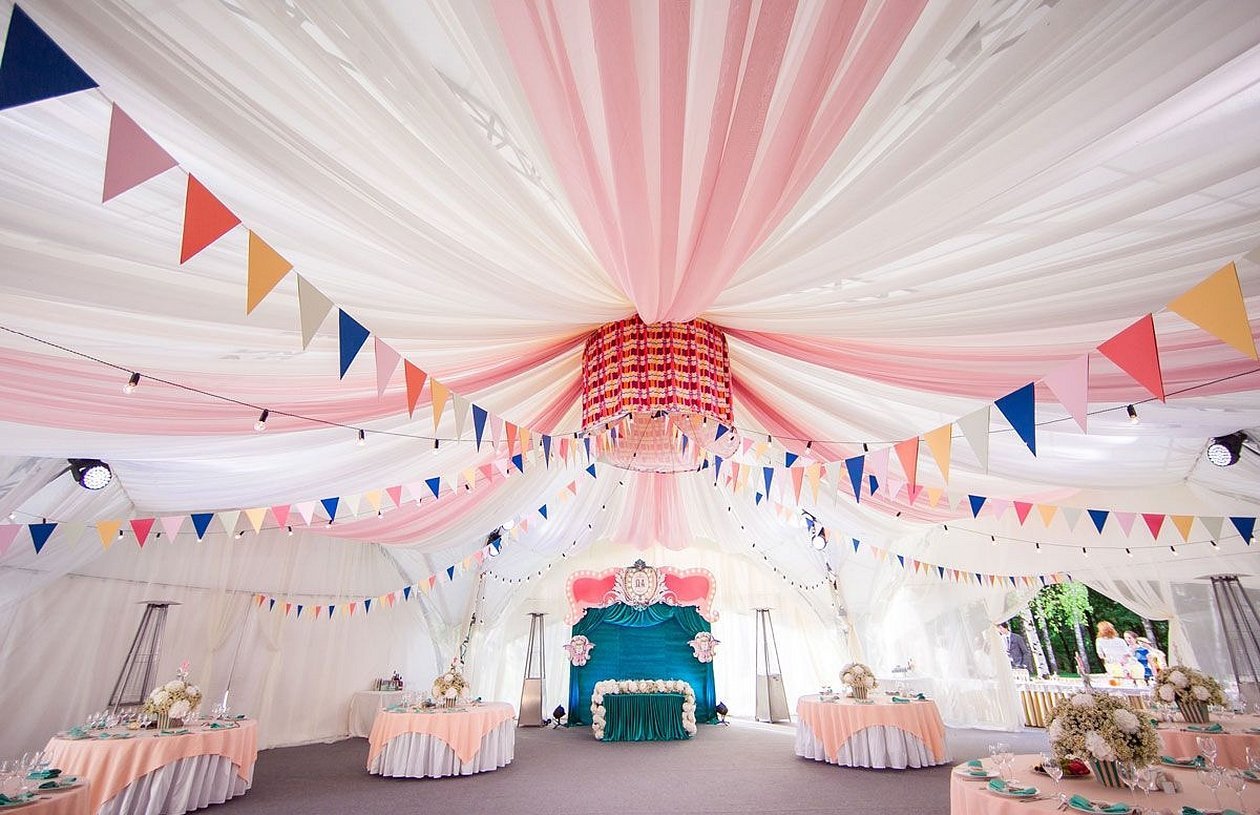
Important! Not so long ago, decorating the area of cafes and restaurants for corporate events and events, such as weddings, in the form of a tent became widespread. This is not the cheapest decor option and a huge amount of textiles is used to make it, but the impression it makes is amazing.
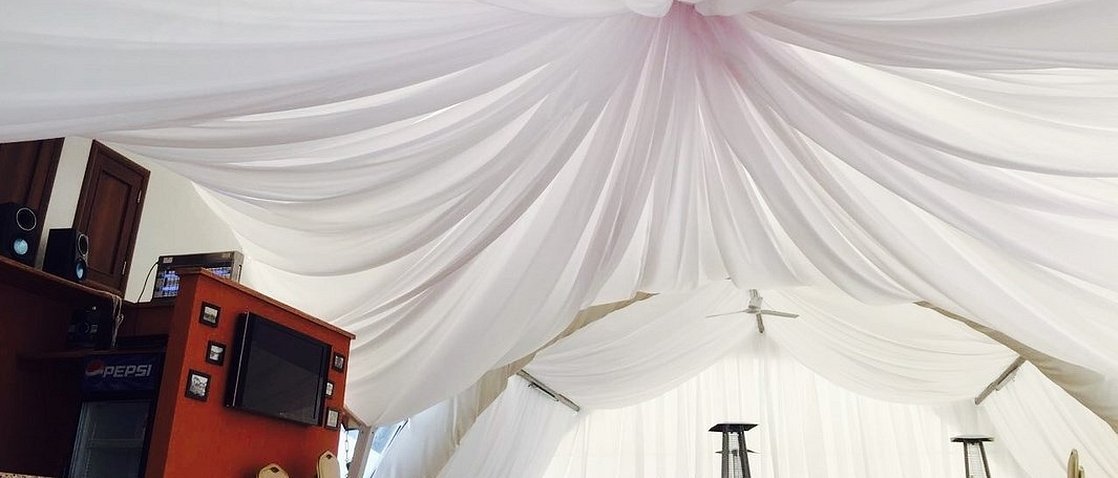
Textile drapery is one of the most important design elements that creates unique, harmonious and fashionable interiors. The most important thing is to consider the purpose of the room, its original design and furniture, the size of the ceiling, windows and openings.




